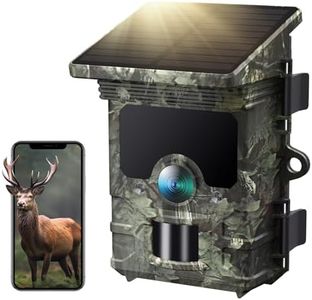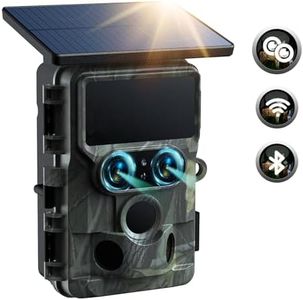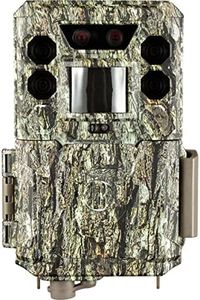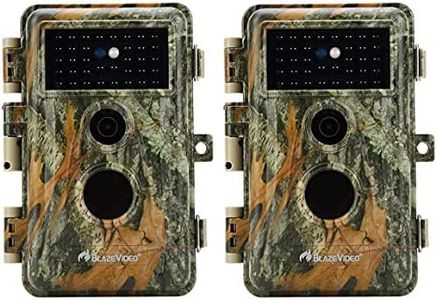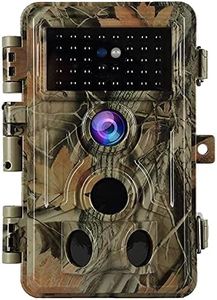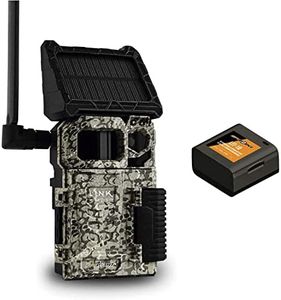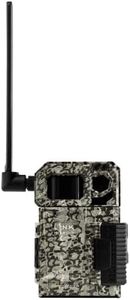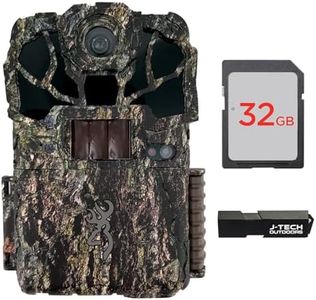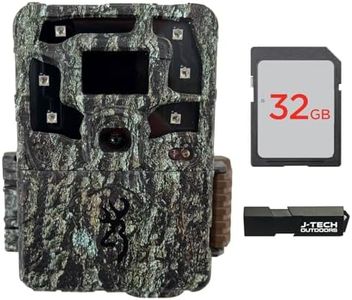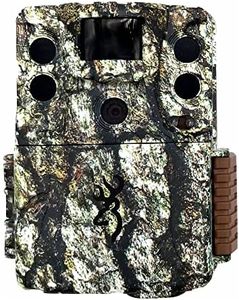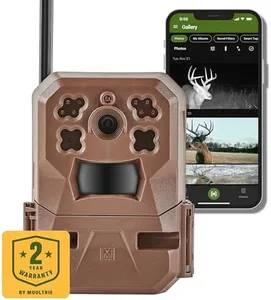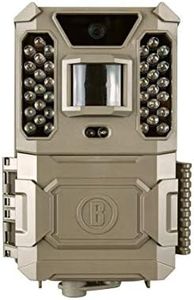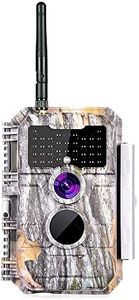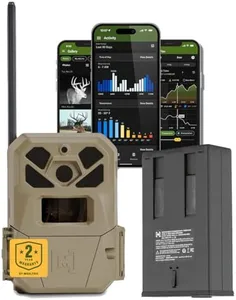We Use CookiesWe use cookies to enhance the security, performance,
functionality and for analytical and promotional activities. By continuing to browse this site you
are agreeing to our privacy policy
10 Best Game Cameras
From leading brands and best sellers available on the web.Buying Guide for the Best Game Cameras
Choosing a game camera, also known as a trail camera, can greatly improve your ability to monitor wildlife or secure property. The right camera for you depends on what you're looking to monitor, the conditions it will be used in, and how you want to review the captured images or footage. Pay attention to the main features and think about how they relate to your specific use case, like hunting, wildlife observation, or security.Image ResolutionImage resolution refers to the number of pixels used to create an image. This spec matters because higher resolution images offer more detail, allowing you to better identify animals or intruders. Cameras typically range from about 5 megapixels for basic models to over 20 megapixels for high-end units. If you want clear and detailed photos—perhaps for identification or large prints—choose a higher resolution. If you just need to know what is passing by, a lower resolution can be sufficient and will save storage space.
Detection RangeDetection range is the distance at which a camera can sense movement and trigger image or video capture. This is important for covering larger areas or setting up in spots where animals pass at a distance. Detection ranges usually fall between 40 and 100 feet. For dense forests or focused monitoring, shorter ranges work well. For wide-open areas or large trails, a camera with longer detection range is preferable.
Trigger SpeedTrigger speed is how quickly a camera takes a photo after detecting motion. A fast trigger speed means you’re more likely to capture animals in the frame, especially faster-moving ones like deer or birds. Speeds can range from about 0.1 seconds (very fast) to 1 second or more (slower). If you want to ensure you don’t miss any action, choose a camera with a trigger speed under 0.5 seconds. For slower or routine monitoring, this is less critical.
Night VisionNight vision determines how well the camera can take photos or videos in complete darkness. Many cameras use infrared (IR) LEDs for this purpose, and specs will mention things like ‘no-glow’ or ‘low-glow’ IR. No-glow cameras are less likely to spook wildlife or be noticed by intruders, while low-glow may give a faint red light. If you need stealth or are monitoring shy animals, go for no-glow. If visibility is less of a concern, low-glow can work and often provides a little more range.
Battery LifeBattery life is the amount of time the game camera will operate before needing new batteries. Long battery life is crucial if you plan to leave your camera unattended for weeks or months. Battery life varies based on how often the camera is triggered, features like video use, and the type of batteries used. If your camera is hard to access or you want less maintenance, pick one that promises lengthy battery life or supports external power sources.
Storage OptionsGame cameras save images and videos to a memory card, and the supported card size and type are important. Higher capacity cards allow you to record more before needing to retrieve or replace them. Most cameras use SD cards, with typical capacities ranging from 8GB to 32GB, but some models support even larger cards. If you’re capturing lots of high-res photos or videos and want to minimize visits to the camera, choose one that supports larger cards.
WeatherproofingWeatherproofing means how well the camera can withstand elements like rain, snow, dust, and temperature changes. This is critical if you’re placing the camera outdoors for long periods. Look for cameras described as waterproof or with an IP rating indicating resistance to water and dust. For most outdoor users, a robust, weather-resistant camera is a must to ensure reliability year-round.
Ease of UseEase of use covers the simplicity of setting up, programming, and retrieving images from the camera. Features like clear menus, quick set-up modes, and easy-to-access card slots make a big difference, especially if you’re new to game cameras. If you don’t want to fuss with complicated settings or technology, go for a model known for user-friendly controls.
